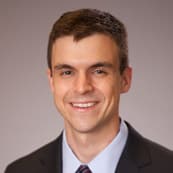Researcher Spotlight: Christopher Sauter, MD
Perelman School of Medicine, University of Pennsylvania

Chimeric antigen receptor (CAR) T-cell therapies work by harnessing the power of T cells to kill lymphoma cells through a variety of cytotoxic mechanisms that are coordinated simultaneously. Although these therapies have revolutionized the treatment of chemotherapy resistant B-cell lymphomas, many patients treated with CAR T cells will eventually relapse as their cancer becomes resistant to the antitumor activities of these agents. In order to prevent CAR T-cell resistance, Dr. Sauter’s research is aimed at quantifying how much each of the different cytotoxic activities contributes to antitumor activity. “This understanding will unveil how resistant tumors may evade T-cell killing by dampening one or multiple discrete CAR T-cell pathways,” he explains. “We can leverage this knowledge to engineer CAR T cells with more potent cytotoxic potential to efficiently clear resistant tumor cells.”
Dr. Sauter earned his medical degree from Emory University in Atlanta, GA. He is currently completing a hematology and oncology fellowship at the Hospital of the University of Pennsylvania, with the goal of developing a career as a physician scientist. “I was drawn to lymphoma research because it represents the forefront of translating scientific knowledge into actionable therapies for patients,” he says. He is excited about the rapid pace of research in the field of lymphoma therapy and how it has changed the treatment of patients. “The goal post has shifted beyond achieving better ‘median overall survival’ and is now selecting which therapy will achieve the best cure, best quality of life, and minimize time spent in the hospital or physician’s office.”
Building on his experiences as an LRF Postdoctoral Fellow, Dr. Sauter hopes to create a new framework for understanding how immunotherapies work, with the goal of fueling the development of a next generation of safer and more effective options. “I am a believer in the synergy derived from the bench-to-bedside and bedside-back-to bench research cycle,” he says. “As a physician scientist, the resonance between the clinical and research realms allows for more innovative and meaningful investigation.”

